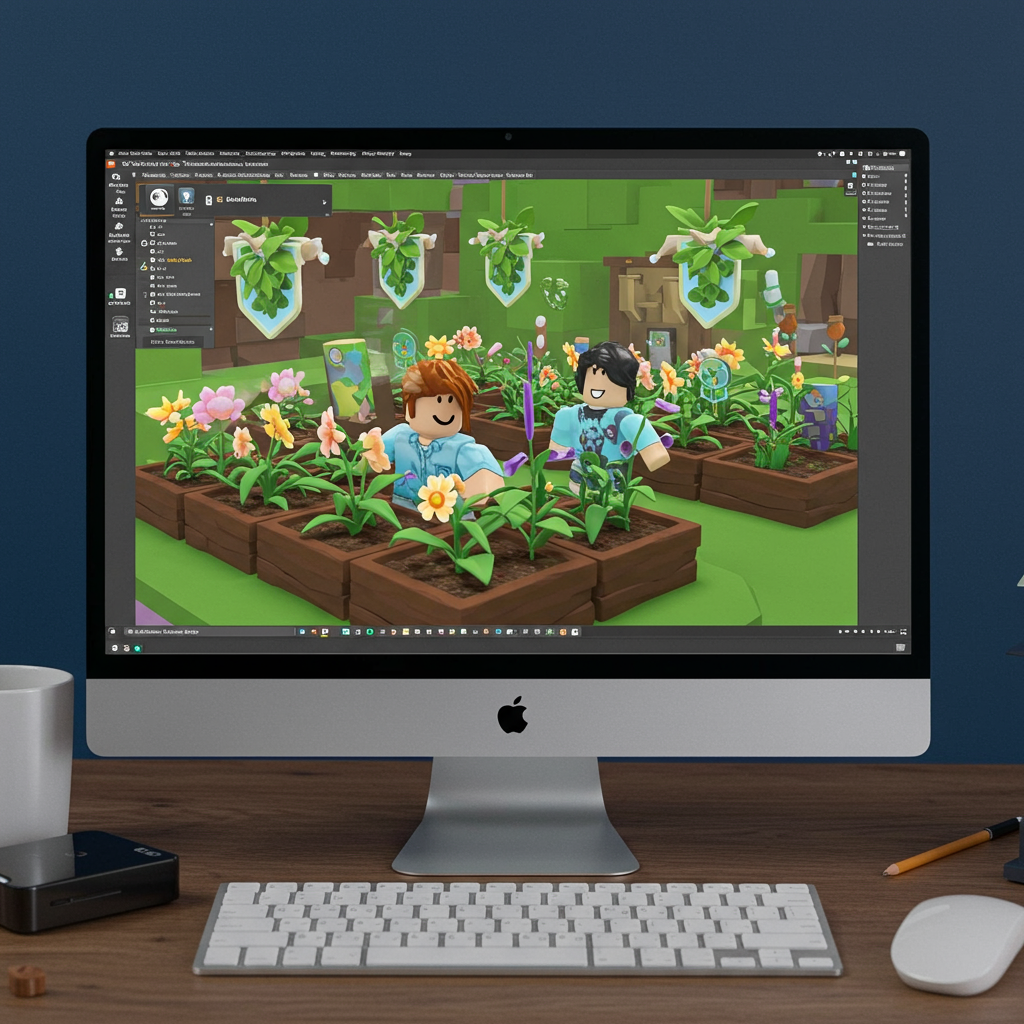Forget high-octane action and thrilling chases. While many top video games aim to get your heart racing, one of the world’s newest hits offers a surprisingly sedate experience: gardening.
Welcome to Grow a Garden on Roblox
Grow a Garden, available on the popular online platform Roblox, tasks players with a simple, calming activity: slowly cultivating a small virtual patch of land. This unassuming premise recently propelled the game to astonishing heights. Earlier this month, it attracted over 16 million concurrent players during a single weekend – a figure that incredibly surpassed a previous concurrent player record held by the adrenaline-fueled battle royale giant, Fortnite.
What is it about this digital dirt-digging simulation that has captured the attention of so many, particularly children? And could spending time in a virtual garden actually encourage interest in the real thing?
Simple Gameplay, Massive Appeal
The core gameplay of Grow a Garden is straightforward, mirroring its title. Players begin with a brown plot of land. Set to relaxing background music, they can purchase seeds from a virtual shop and plant them. A key feature is that plants continue to grow even when you’re offline, rewarding players for their patience.
Once plants mature, players can harvest their produce and sell it for Sheckles, the in-game currency. There’s also a slightly mischievous element: the ability to ‘borrow’ produce from neighbours’ gardens!
Why Are Players Hooked?
Despite its seemingly slow pace, Grow a Garden has garnered a devoted following. Eight-year-old Eric Watson Teire, a huge fan along with his 10-year-old brother Owen, notes the unique appeal of the game’s rhythm. “There’s a bit of patience to it,” Eric explains.
The game also fosters a strong social and competitive dynamic. Eric adds that “a lot” of his school friends play, allowing them to engage in competitions. “We can do competitions with each other – like, who’s got the most Sheckles, who’s got the best plant.” Owen enjoys the anticipation of harvesting rare crops, wondering, “Could there be a sugar apple – which is the best plant you can get? Or will there be a carrot, which is the worst?”
A Roblox Phenomenon
Since its launch in March, Grow a Garden has accumulated approximately 9 billion visits on the Roblox platform. Statistics show that a significant portion of its audience is young, with about 35% of players aged 13 and under.
The game exists within the vast ecosystem of Roblox, one of the world’s largest gaming platforms, boasting 97.8 million daily users in early 2024. Roblox hosts around 40 million user-created games and is particularly popular with 8 to 12-year-olds in the UK. (Note: The original article mentioned past reports regarding safety concerns on the platform, which Roblox has addressed by stating confidence in their safety tools and a commitment to minimizing incidents.)
The Role of In-Game Currency
While Grow a Garden is free to play, the pace of gameplay can be accelerated using Robux, Roblox’s premium currency purchased with real money. This free-to-play model with paid acceleration and in-game purchases is a crucial element of the game’s economy.
Professor Sarah Mills, who researches young people and gaming, highlights the impact of such paid reward systems on children’s financial literacy and how they can affect family dynamics, even changing how pocket money is used. The value placed on virtual items is evident, with some sought-after items like mutated candy blossom trees or dragonflies reportedly selling for hundreds of pounds on platforms like eBay.
Does Virtual Gardening Lead to Real Gardening?
The success of Grow a Garden raises an interesting question: could this virtual passion translate into a real-world hobby? Experts offer differing views.
Professor Andrew K. Przybylski is sceptical, suggesting a game like this is “unlikely” to encourage real gardening any more than Super Mario Wonder inspires plumbing. Gardening podcaster Thordis Fridriksson is more optimistic, believing any interest in gardening is positive. She notes the game taps into the fundamental joy of planting seeds and watching things grow, a core appeal of real gardening, and hopes players might try growing something at home.
Even young player Owen, who helps in his family’s real garden, acknowledges the difference. While he enjoys both, when asked which he prefers, his answer is unequivocal: “Grow a Garden!”
Ultimately, whether Grow a Garden sows seeds for future real-life gardeners remains to be seen. But for now, millions are finding surprising joy and connection in cultivating their own little corner of the virtual world.




